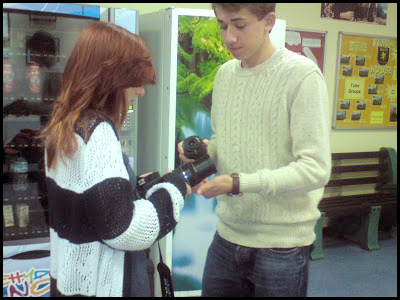Te following screenshot shows our first synopsis idea.
Matthew also produced this video to create a visual version of ideas that we had come up with in this synopsis.
Fellow classmates puts comments on to our work and highlighted them with yellow markers so we would know exactly what they were talking about. A lot of the comments didn't seem very useful or even aware of our story's purpose, thus leading us to believe that our synopsis, and overall plot, was not understood and needed some changes.
This is our final synopsis and plot idea. This will be what we produce for our final product.
Target Audience:
We then decided to jot down what our preferred target audience for our short film would be;
Although we may not meet these EXACT preferences in the final piece, we will make sure to stick as much as we can to this audience type. We have however noticed that our target audience seems to be quite limited, so if we are to match these targets, we must make sure to make quite specific points throughout our film to match their stereotypical appeals.
- 12 is an age that is often involved with or approaching being involved with a lot of themes that are currently in social realist films of today. This could show the youth that this pathway in the film isn't a good one to take and may provide a role model for them if they ever feel the urge to runaway themselves; showing a way to cope or deal with the situation correctly.
- We also chose the age 12 as this is when our youth start to find themselves and become their own person, choosing what will influence their actions and self. Any younger, say for a PG rating, could possibly influence children to runaway from home or act antisocial getting involved in family arguments on purpose due to having be influence by our film. We would NOT want that effect on children, it would cause a very negative response for us as producers and would promote our film as being bad.
- We also considered how there isn't any offensive content in the film either though, aside one 'mouthed' profanity which could be misheard or misinterpreted. We did however take measures to make sure this wouldn't be seen as offensive to anyone and boosted the 12A certificate idea. We also would want their parents to be aware of the content they are watching, thus encouraging the fact that a 12A certificate is appropriate.
As most social realistic films are about working class people, we wanted the film to be best viewed by this class too, as we felt they would relate to it best. We did however think that middle-class may appreciate the film too, as it may seem dramatic to them. However, overall, working class people will best be suited to our film.
Overall, I quite like our final film synopsis/idea and I think we can definitely match some of the typical conventions and themes that are often approached in social realism films, as well as challenge some of the presentation techniques that are used to get them across the an audience.
It would also be a great idea to reference any information and knowledge we gained from Ken Loach, as he focussed quite a lot of his work on the idea of homelessness; which strongly relates to our film idea of running about and having no where to go (being homeless).























